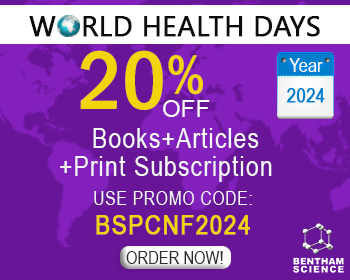Abstract
Background: Colorectal cancer represents one of the prominent causes of mortality worldwide in men and women. The objective of this study was to search for new potential anticancer compounds, both in prevention and treatment of colorectal cancer. The anticancer potential of marine bacterial extracts against Human colorectal carcinoma cell line (HCT116) was evaluated as well as the partial identification of bioactive metabolites.
Methods: All bacterial extracts were tested for their cytotoxicity against HCT116 cell line by means of MTT assay. The highly cytotoxic dichloromethane extracts of marine sponge-associated bacteria Vibrio sp. and Bacillus sp. were analyzed by GC-MS.
Results: Two fractions, Vib3 and Bac3, exhibited a very interesting cytotoxicity against human colorectal carcinoma (HCT116) cell line, with a percentage of cytotoxicity of 96.04 % and 29.48 %, respectively.
Discussion: The GC-MS analysis revealed the presence of two major fatty acids, palmitic and oleic acids, in Vib3 fraction and fatty acid esters and phenolic compounds in Bac3 fraction.
Conclusion: Based on previous literature, it may be hypothesized that the anticancer activity of bacterial extracts could be, at least partially, to the fatty acids fraction.
Keywords: Marine bacteria, marine sponges, fatty acids, human colorectal carcinoma cell line (HCT116), GC-MS, cancer.
[http://dx.doi.org/10.2174/1573407210666140327212945]
[http://dx.doi.org/10.2174/1573407214666180622104720]
[http://dx.doi.org/10.1146/annurev-nutr-071715-051004] [PMID: 28826375]
[http://dx.doi.org/10.3748/wjg.v12.i42.6741] [PMID: 17106919]
[http://dx.doi.org/10.1093/jn/137.11.2443] [PMID: 17951483]
[http://dx.doi.org/10.2174/157340711798375877]
[http://dx.doi.org/10.1016/j.nut.2017.06.008] [PMID: 28935150]
[http://dx.doi.org/10.2174/138161211795428948] [PMID: 21443484]
[http://dx.doi.org/10.1002/ijc.21083] [PMID: 15880398]
[http://dx.doi.org/10.1186/1476-511X-10-127] [PMID: 21801436]
[http://dx.doi.org/10.1007/s00449-013-0936-0] [PMID: 23525832]
[http://dx.doi.org/10.1007/s00253-018-9063-9] [PMID: 29749565]
[http://dx.doi.org/10.1016/j.prostaglandins.2013.03.002] [PMID: 23500063]
[http://dx.doi.org/10.1177/1934578X1400900225] [PMID: 24689298]
[http://dx.doi.org/10.1016/S1389-0344(03)00038-8] [PMID: 12919814]
[http://dx.doi.org/10.1016/0022-1759(83)90303-4] [PMID: 6606682]
[http://dx.doi.org/10.1515/znc-1998-3-409]
[http://dx.doi.org/10.1007/s00284-016-1144-3] [PMID: 27743105]
[http://dx.doi.org/10.4236/fns.2012.39160]
[PMID: 12529968]
[http://dx.doi.org/10.1007/BF02977619] [PMID: 17424944]
[http://dx.doi.org/10.1080/13880209.2017.1296003] [PMID: 28262033]
[http://dx.doi.org/10.31557/APJCP.2019.20.2.601] [PMID: 30806066]
[PMID: 25635251]
[http://dx.doi.org/10.1186/1472-6882-14-397] [PMID: 25315352]



























